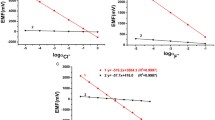Abstract
Trace heavy metal ions are probable carcinogens with concentrations at ppb levels. Ion selective electrode (ISE) technology is a conventional and widely used method to detect various ions with the advantages as rapid measurement, low power consumption and low cost. However, the detection limit of a conventional bulky ISE device is only able to reach ppm level so far, not sensitive enough for practically detecting heavy metal ions. A micro ion selective electrode (μISE) array which can realize multiplex detection of heavy metal ions on one chip is reported in this paper. Its detection limit for Pb2+, Cd2+, AsO2−, and Hg2+ can reach 1, 3, 10, and 1 ppb, respectively, within the permissible limits of drinking water. The micrometer scale device arrays from microfabrication processes demonstrated enhanced sensitivity, uniformity, and reduced response time (18 s) compared to conventional ISE. Our devices showed superb selectivity, and the performance dependence on temperature and pH values was investigated as well.






Similar content being viewed by others
References
Cong Q, Cai Y (2010) Determination of heavy metals in vegetables by microwave digestion/inductively coupled plasma atomic emission spectroscopy. Food Sci 31:290–292
Currie IA (1995) Nomenclature in evaluation of analytical methods including detection and quantification capabilities (IUPAC recommendations 1995). Pure Appl Chem 67:1699–1723
Fischer AC, Forserg F, Lapisa M et al (2015) Integrating MEMS and ICs. Microsyst Nanoeng 1:15005
Gholivand MB, Raheedayat F (2004) Chromium (III) ion selective electrode based on oxalic acid bis (cyclohexylidene hydrazide). Electroanalysis 16:1130–1135
Gulbault GG (1981) Recommendations for publishing manuscripts on ion-selective electrodes. Pure Appl Chem 53:1907–1981
Gupta VK, Agarwal S (2005) PVC based 5, 10, 15, 20-tetrakis (4-methoxyphenyl) porphyrinatocobalt (II) membrane potentiometric sensor for arsenite”. Talanta 65:730–734
Gupta VK, Chandra S, Agarwal S et al (2003a) Mercury selective electrochemical sensor based on a double armed crown ether as ionophore. Indian J Chem 42:813–818
Gupta VK, Chandra S, Agarwal S (2003b) Mercury selective electrochemical sensor based on a double armed crown ether as ionophore. Indian J Chem 42A:813–818
Li P, Zhang D, Liu J et al (2015a) Air-stable black phosphorus devices for ion sensing. ACS Appl Mater Interfaces 7:24396–24402
Li P, Zhang B, Cui T (2015b) TiO2 and shrink induced tunable nano self-assembled graphene composites for label free biosensors. Sens Actuat B Chem 216:337–342
Li P, Zhang B, Cui T (2015c) Towards intrinsic graphene biosensor: a label-free, suspended single crystalline graphene sensor for multiple lung cancer tumor markers detection. Bioesens Bioelectron 72:168–174
Li P, You R, Jing G, Cui T, Ultrasensitive micro ion selective arrays for multiplex heavy metal ions detection, MicroTAS, 2015
Malinowska E, Brzozka Z, Kasiura K et al (1994) Lead selective electrodes based on thioamide functionalized calyx [4] arenes as ionophores. Anal Chim Acta 298:253–258
McGraw CM, Radu T, Radu A et al (2007) Evaluation of liquid- and solid-contact, Pb2+-selective polymer membrane electrodes for soil analysis. Electro Anal 20:340–346
Naushad M, Inamuddin, Rangreez TA et al (2014) A mercury ion selective electrode based on poly-o-toluidine Zr (IV) tungstate composite membrane. J Electro Anal Chem 713:125–130
Ravisankar R, Chandrasekaran S, Chandrasekaran A et al (2015) Statistical assessment of heavy metal pollution in sediments of east coast of Tamilnadu using energy dispersive X-ray fluorescence spectroscopy (EDXRF). Appl Radiat Isot 102:42–47
Rui Y, Hao J (2012) Determination of nine heavy metals by inductively coupled plasma mass spectroscopy in groundwater from northeast rural of China. Asian J Chem 24:2825–2826
Sutter J, Radu A, Peper S et al (2004) Solid-contact polymeric membrane electrodes with etection limit in the subnanomolar range. Anal Chim Acta 523:53–59
Wang Z, Wang H, Zhang Z et al (2014) Sensitive electrochemical determination of trace cadmium on a stannum film/poly (p-aminobenzene sulfonic acid)/electrochemically reduced graphene composite modified electrode. Electrochim Acta 120:140–146
Xie F, Lin X, Wu X, Xie Z (2008) Solid phase extraction of lead (II), copper (II), cadmium (II) and nickel (II) using gallic acid-modified silica gel prior to determination by flame atomic absorption spectrometry. Talanta 74:836–843
Author information
Authors and Affiliations
Corresponding author
Additional information
Publisher's Note
Springer Nature remains neutral with regard to jurisdictional claims in published maps and institutional affiliations.
Rights and permissions
About this article
Cite this article
You, R., Li, P., Jing, G. et al. Ultrasensitive micro ion selective sensor arrays for multiplex heavy metal ions detection. Microsyst Technol 25, 845–849 (2019). https://doi.org/10.1007/s00542-018-4067-z
Received:
Accepted:
Published:
Issue Date:
DOI: https://doi.org/10.1007/s00542-018-4067-z




